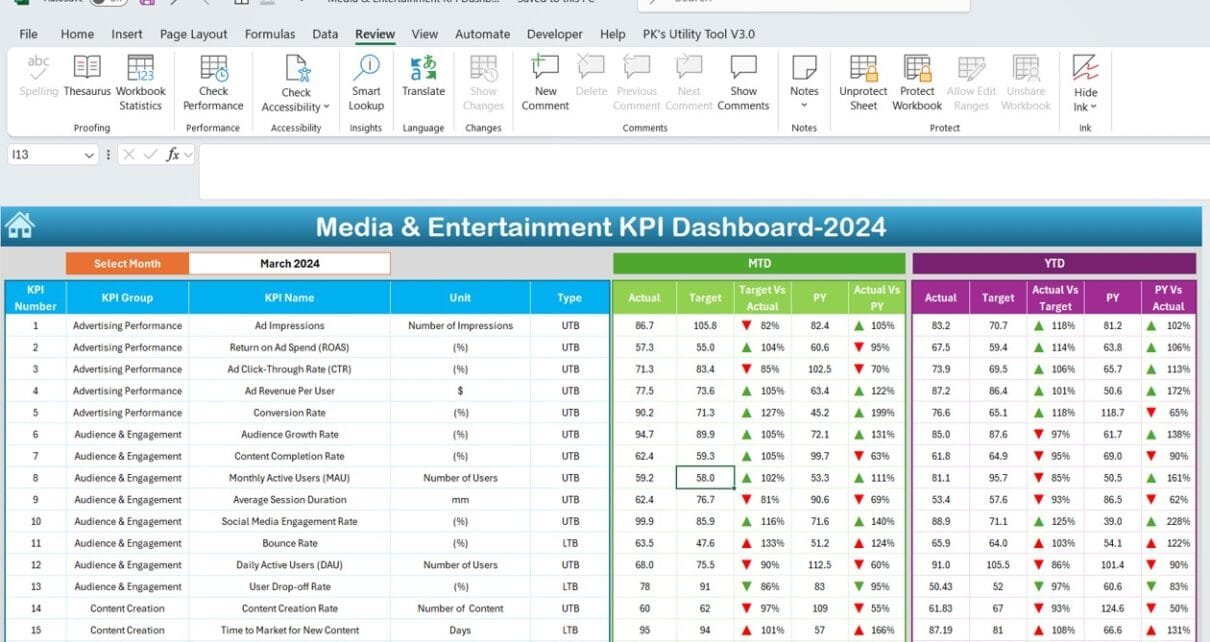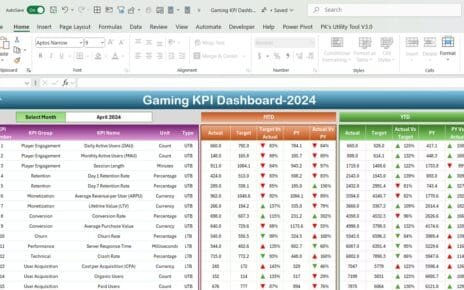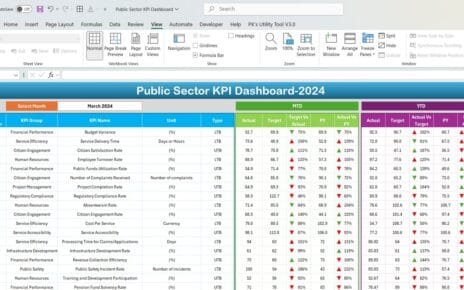The media and entertainment industry is constantly evolving, with new technologies and changing audience demands. This means companies need a way to quickly and accurately track performance. That’s where a Media & Entertainment KPI Dashboard comes in. This dashboard pulls all your key performance indicators (KPIs) into one place, giving you an instant snapshot of your company’s performance, whether you’re looking at viewer engagement, content success, or revenue growth.
Let’s break down what makes this KPI dashboard so effective, dive into each KPI, and cover the best ways to use it for business growth.
Key Features of the Media & Entertainment KPI Dashboard
Our KPI Dashboard template is packed with features to streamline KPI management and make tracking easy. Here’s what’s inside:
Home Sheet
Think of this as your dashboard’s “control center.” The Home Sheet is an index page with six clickable buttons that allow you to jump directly to each section, saving time and making navigation simple.
Click to buy Media & Entertainment KPI Dashboard
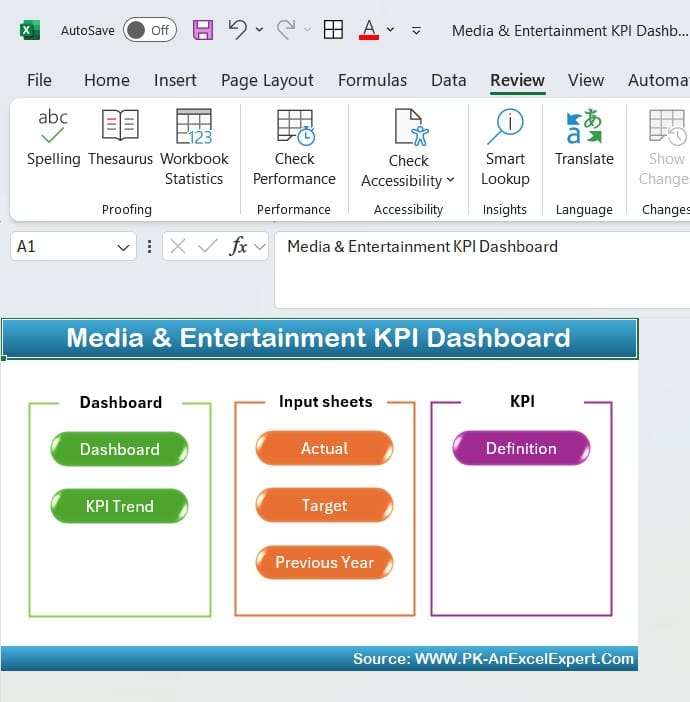
Dashboard Sheet
The Dashboard Sheet is where all the KPI magic happens! This main sheet displays KPIs, and by selecting a month from the dropdown in cell D3, you can instantly view updated Month-to-Date (MTD) and Year-to-Date (YTD) values, targets, and previous year data.
You’ll also see helpful arrows and color-coded formatting that show how you’re doing compared to targets and the previous year. It’s a quick, visual way to track progress and identify trends.
Click to buy Media & Entertainment KPI Dashboard
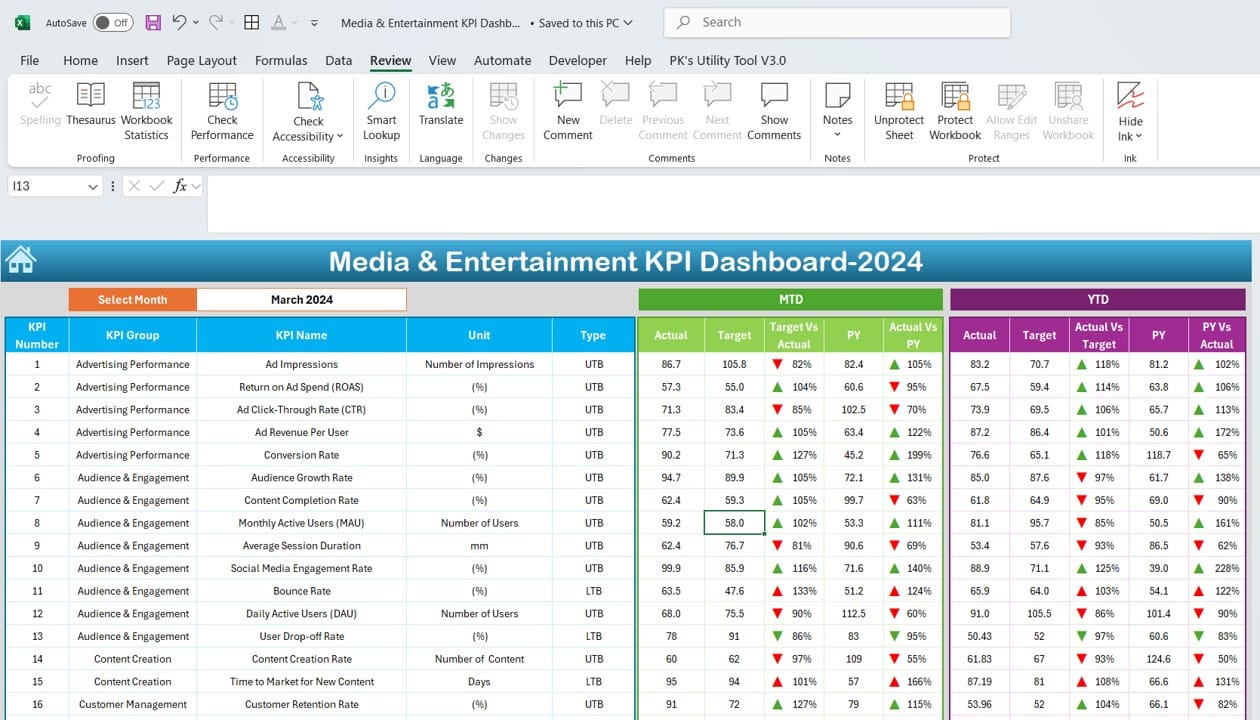
KPI Trend Sheet
Want to dive deeper into specific KPIs? This sheet has you covered. Just pick a KPI from the dropdown menu in cell C3, and you’ll see details like KPI Group, unit of measure, performance type (higher or lower is better), the aggregation formula, and a clear KPI definition.
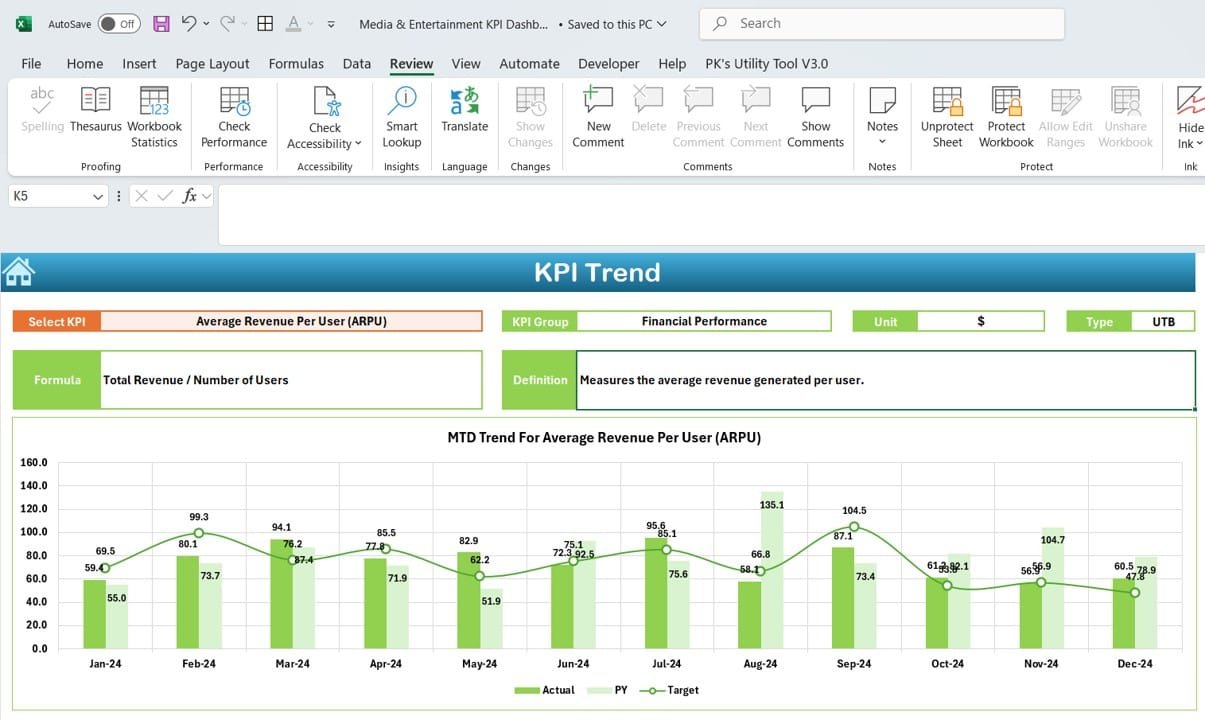
Click to buy Media & Entertainment KPI Dashboard
Actual Numbers Sheet
This is where you input actual performance data for each KPI on a monthly basis. Simply select a month in cell E1 to get an up-to-date view of your Month-to-Date (MTD) and Year-to-Date (YTD) values.
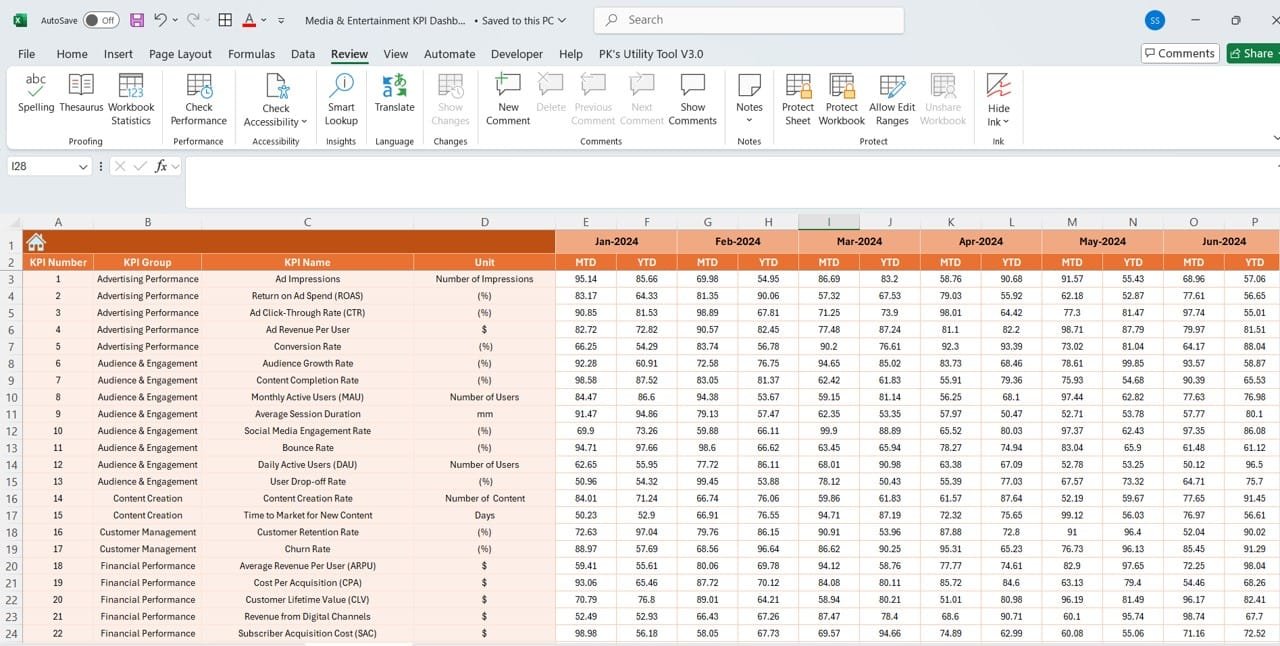
Click to buy Media & Entertainment KPI Dashboard
Target Sheet
In this sheet, you can set monthly and yearly targets for each KPI. Having set benchmarks allows for easy comparison and ensures accuracy.
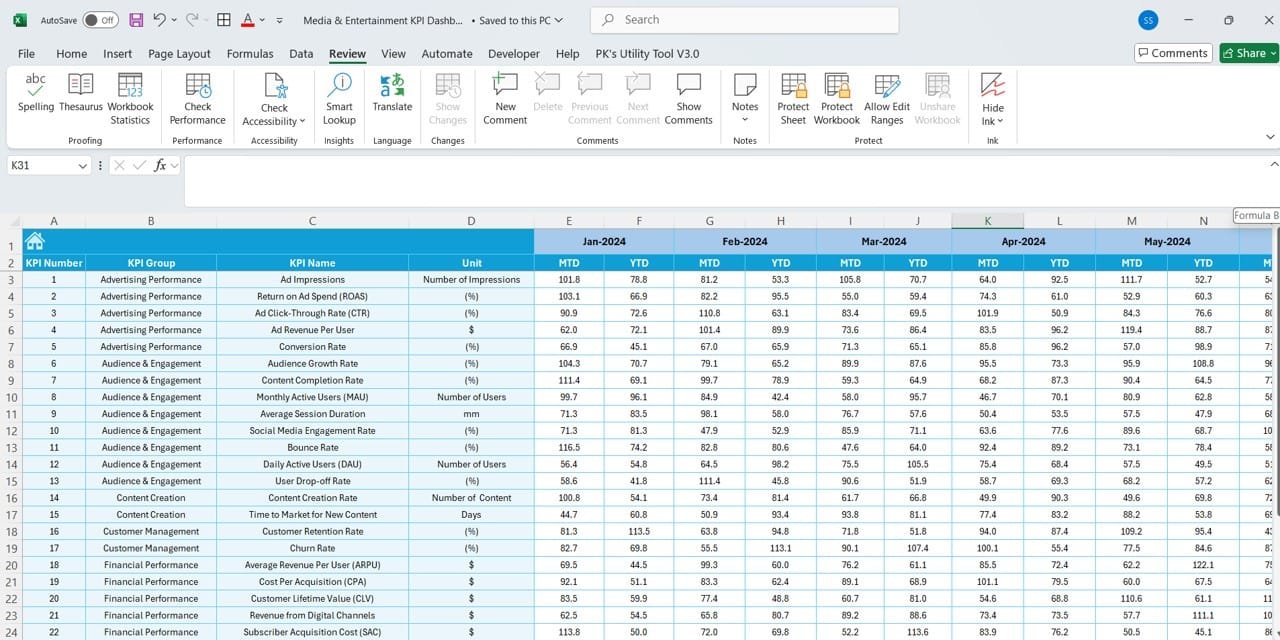
Click to buy Media & Entertainment KPI Dashboard
Previous Year Numbers Sheet
This sheet is great for year-over-year comparisons. You can enter the prior year’s data for each KPI and track your growth over time.
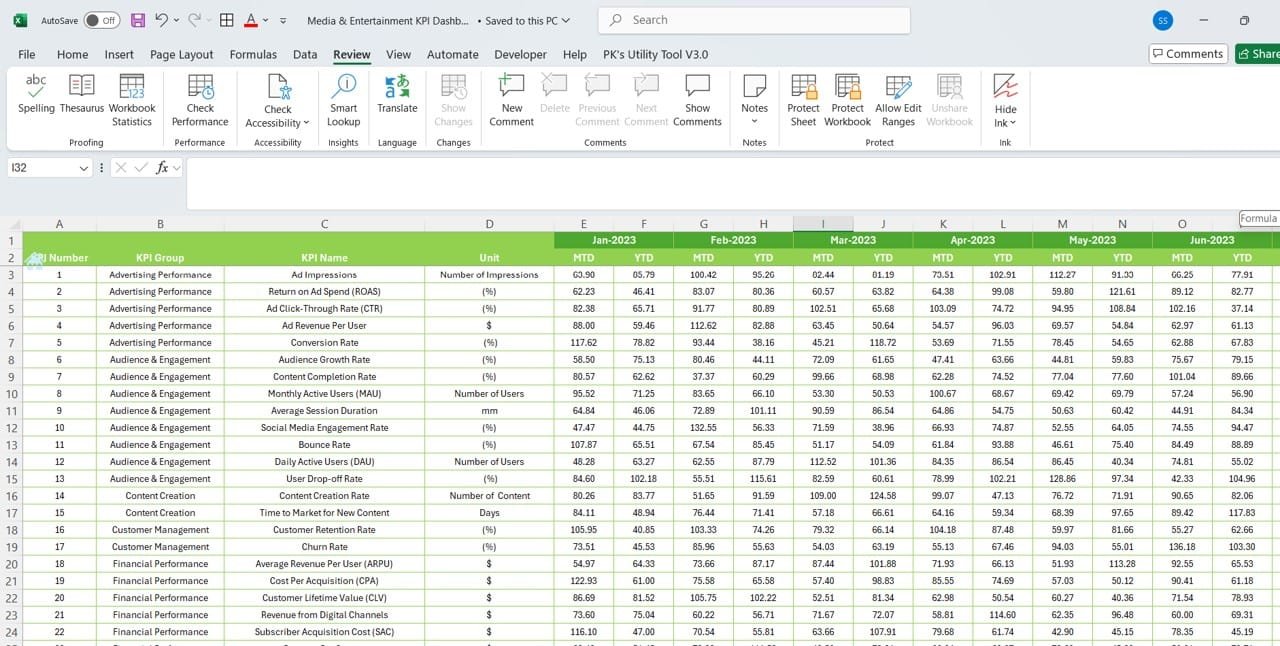
Click to buy Media & Entertainment KPI Dashboard
KPI Definition Sheet
Need a quick reference? This sheet includes each KPI’s name, group, unit, aggregation formula, and definition. It’s perfect for ensuring everyone understands the importance of each KPI.
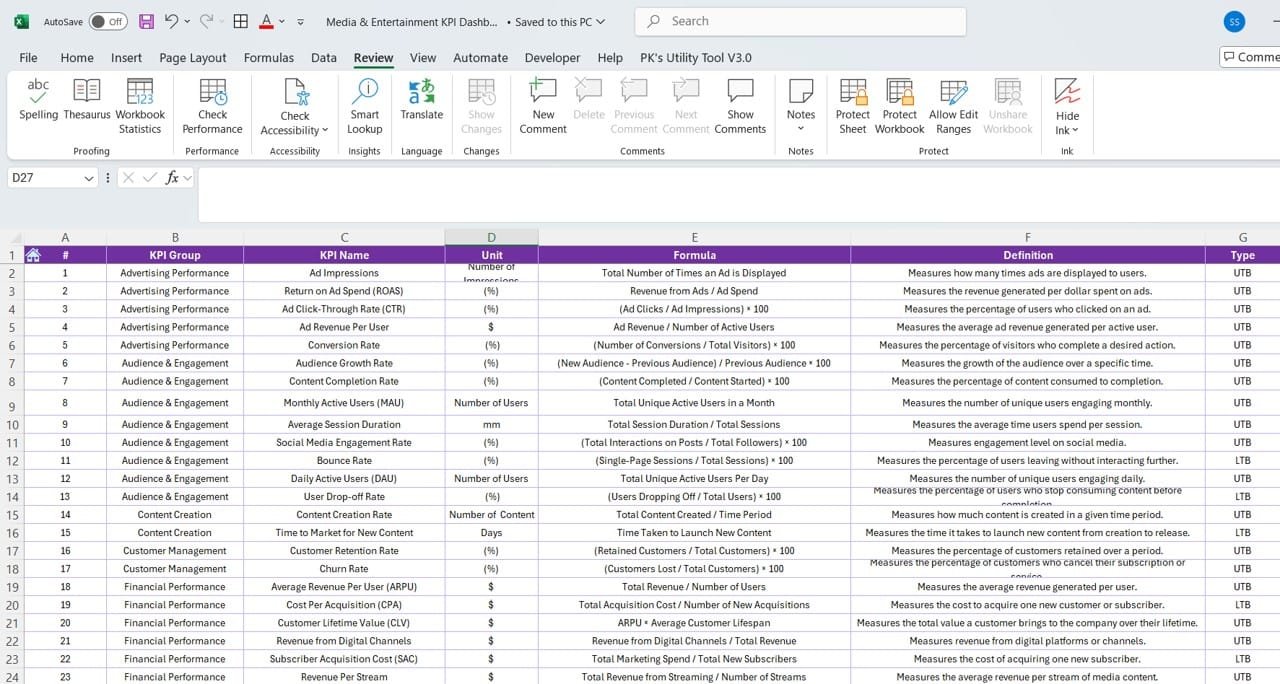
Click to buy Media & Entertainment KPI Dashboard
Essential KPIs in the Media & Entertainment Dashboard
Here are some of the most valuable KPIs for the media and entertainment industry, each with a clear definition, unit, formula, and performance indicator (whether higher or lower is better).
Visits) * 100
- Definition: Measures how effective your content is at turning viewers into paid subscribers.
- Performance Indicator: Higher is better
Monitoring these KPIs helps your team spot growth areas, identify improvement needs, and track progress toward business goals.
Advantages of Using a Media & Entertainment KPI Dashboard
A solid KPI dashboard provides tons of benefits. Here’s why it’s a must-have:
- Better Visibility: With all metrics in one place, decision-makers get a clear, real-time view of essential indicators like engagement and revenue.
- Enhanced Decision-Making: Real-time data helps you make quicker, data-backed decisions, allowing you to stay responsive to market shifts.
- Streamlined Monitoring: By centralizing data, this dashboard eliminates the need for manual tracking, saving time and boosting accuracy.
- Improved Performance: Tracking KPIs such as Audience Growth Rate and Revenue per User highlights trends, making it easier to adjust strategies for better results.
- Clear Benchmarking: Consistently comparing actuals to targets and previous years’ data ensures measurable progress.
Best Practices for Implementing Media & Entertainment KPIs
To get the most out of your dashboard, follow these best practices:
- Align KPIs with Goals: Focus on KPIs that directly support your business objectives. Skip any that may add clutter without delivering useful insights.
- Set Realistic Targets: Aim for achievable monthly and yearly targets to keep motivation high and track progress effectively.
- Update Data Regularly: Monthly updates for MTD and YTD values ensure that your dashboard reflects accurate, timely information.
- Use Visual Indicators: Utilize color coding, arrows, and charts to highlight trends and make the dashboard visually appealing and easy to interpret.
- Look for Trends in Past Data: Historical data can help identify trends, whether they are positive growth or areas that need attention.
Opportunities for Improvement in a Media & Entertainment KPI Dashboard
While this dashboard is powerful, there’s always room for improvement. Here are a few ideas:
- Automate Data Collection: Manually updating data can be tedious. Integrating APIs or connecting with content management systems can streamline data collection and reduce errors.
- Make It Mobile-Friendly: A mobile-friendly dashboard lets team members access data on the go, improving accessibility and flexibility.
- Expand the KPI Library: Keep revisiting and updating your KPIs. Add new metrics that reflect changing industry trends for a more comprehensive view.
- Consider Predictive Analytics: Using historical trends to predict future performance can help with proactive decision-making and improve long-term strategies.
Frequently Asked Questions (FAQs)
Q1: What is a Media & Entertainment KPI Dashboard?
A Media & Entertainment KPI Dashboard is a tool for tracking and visualizing key performance metrics, helping businesses analyze and improve their performance.
Q2: How do I pick the right KPIs for my dashboard?
Focus on KPIs that align with your business goals, such as audience engagement, revenue growth, or content completion rate.
Q3: How often should I update the dashboard?
For accurate tracking, update Month-to-Date (MTD) and Year-to-Date (YTD) data monthly. Use annual reviews for long-term trends.
Q4: Can small media businesses use this dashboard?
Yes, it’s versatile enough to benefit media companies of any size, providing insights into critical performance areas.
Q5: Can I add more KPIs to the dashboard?
Absolutely! This dashboard is fully customizable, so you can add or remove KPIs as your business needs change.
Q6: What do MTD and YTD mean?
MTD stands for Month-to-Date, tracking performance for the current month. YTD is Year-to-Date, covering performance from the start of the year to the present.
Visit our YouTube channel to learn step-by-step video tutorials
Click to buy Media & Entertainment KPI Dashboard
